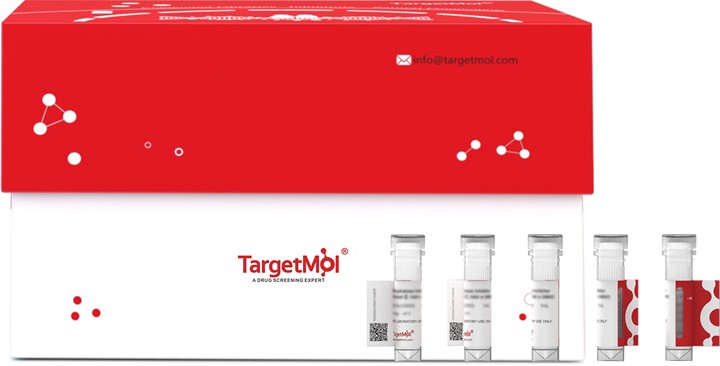Shopping Cart
Remove All Your shopping cart is currently empty
Your shopping cart is currently empty
Claudin-6 Protein, Human, Recombinant, Fluorescent,VLP is expressed in HEK293 mammalian cells. The predicted molecular weight is 50.31 kDa and the accession number is P56747.

| Pack Size | Price | USA Warehouse | Global Warehouse | Quantity |
|---|---|---|---|---|
| 5 μg | $298 | 7-10 days | 7-10 days | |
| 10 μg | $490 | 7-10 days | 7-10 days | |
| 20 μg | $838 | 7-10 days | 7-10 days | |
| 50 μg | $1,230 | 7-10 days | 7-10 days | |
| 100 μg | $1,930 | 7-10 days | 7-10 days | |
| 200 μg | $2,750 | 7-10 days | 7-10 days | |
| 500 μg | $6,150 | 7-10 days | 7-10 days |
| Biological Activity | Immobilized Human CLDN6-VLP (Full Length) Protein at 5 μg/mL (100 μL/well) can bind Anti-Human CLDN6 Antibody, Human IgG1, the EC50 is 5-25 ng/mL. |
| Description | Claudin-6 Protein, Human, Recombinant, Fluorescent,VLP is expressed in HEK293 mammalian cells. The predicted molecular weight is 50.31 kDa and the accession number is P56747. |
| Species | Human |
| Expression System | HEK293 Cells |
| Tag | Tag Free |
| Accession Number | P56747 |
| Synonyms | claudin 6 |
| Construction | A DNA sequence encoding the human CLDN6 (P56747) (Met1-Val220) was expressed. This protein carries a GFP tag. Predicted N terminal: Met 1 |
| Molecular Weight | 50.31 kDa (predicted) |
| Endotoxin | < 1.0 EU/μg of the protein as determined by the LAL method. |
| Formulation | Supplied as solution in 50 mM HEPES, 150 mM NaCI, 10% Trehalose, pH 7.2. |
| Stability & Storage | It is recommended to store the product under sterile conditions at -70°C or lower. Samples are stable for up to 12 months at -80°C. Please avoid multiple freeze-thaw cycles and store products in aliquots. |
| Shipping | Shipping with blue ice. |
| Research Background | Claudin-6 (CLDN6) belongs to the claudins family and is a transmembrane protein found in tight junctions with two extracellular loops and intracellular N and C tails. CLDN6 modulates the ion- and charge-specific permeability of the paracellular pathway in most epithelial tissues. It regulates the paracellular flux of cations in the kidney through forming heterotypic strands with other claudins and has a role in maintaining the lung epithelial barrier function. The CLDN6 gene is adjacent to another family member, CLDN9, on chromosome 16. Certain CLDN6-positive cancers, encompassing ovarian, endometrial, and testicular malignancies, have been shown to have their proliferation and invasiveness suppressed upon CLDN6 silencing. |
| Size | Quantity | Unit Price | Amount | Operation |
|---|

Copyright © 2015-2025 TargetMol Chemicals Inc. All Rights Reserved.